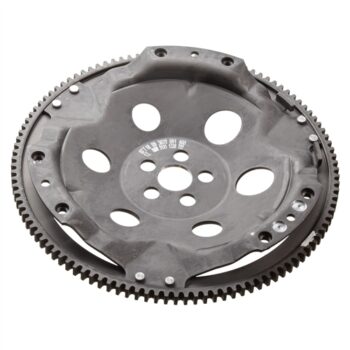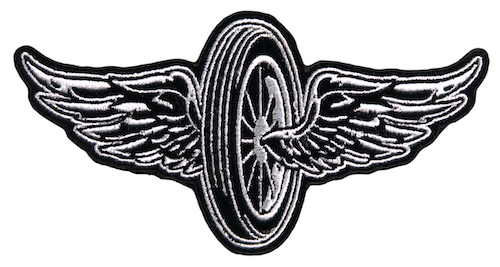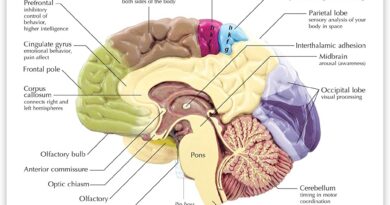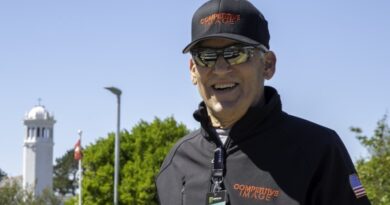Flywheels
Anyone familiar with my writing knows I like to use motorcycle-related metaphors and analogies for psychological phenomena. Of course, these break down when extended too far, but they can serve as starting points for approaching complexities otherwise difficult to conceptualize or articulate. Metaphors and analogies from the physical world get used all the time and across all sorts of categories in our routine communications; imagery and principles from our experiences with concrete objects are embedded in how we talk, think, and reason about virtually everything. Our earliest experiences of the non-verbal physical world, including bodily actions and sensations, become the building blocks of thought and language, and this process continues throughout the rest of our lives in increasingly complex ways.
 When we take the time to notice how pervasive such figures of speech are, and then—just for fun—try to avoid using them, we might find it’s hard to construct an entire sentence or formulate a coherent thought. Much in life is difficult to articulate, and we wind up using indirect means to convey approximations. This is usually good enough for the other person to get our meaning, and it gives us tools for reasoning. However, not all metaphors and analogies are created equal—poor ones will lead us down paths that quickly diverge from realities relevant to the other topic about which we’re actually trying to think or talk.
When we take the time to notice how pervasive such figures of speech are, and then—just for fun—try to avoid using them, we might find it’s hard to construct an entire sentence or formulate a coherent thought. Much in life is difficult to articulate, and we wind up using indirect means to convey approximations. This is usually good enough for the other person to get our meaning, and it gives us tools for reasoning. However, not all metaphors and analogies are created equal—poor ones will lead us down paths that quickly diverge from realities relevant to the other topic about which we’re actually trying to think or talk.
Listen to this column as Episode 13 of The Ride Inside with Mark Barnes. Joining Mark on this episode is Tom Gary, President of the MOA Foundation. In Part 1 of their discussion, Tom gets into the Foundation’s mission to improve rider safety, training and awareness. Submit your questions to Mark for the podcast by emailing [email protected].
Old note from your high school English class: Metaphors equate or substitute one thing for another as though the two were synonymous, as in “Laughter is the best medicine.” Obviously, laughter is not literally medicine, but this way of describing it succinctly and vividly conveys the notion laughter has a quality we normally associate with medicine: it helps us feel better. Analogies draw parallels between two things a bit more prosaically without the quasi-poetic substitution, as in “Life is like a box of chocolates.” Forrest Gump’s mama used this phrase to illustrate the point we never know what the next day will contain. The two categories remain explicitly separate; their similarities are compared instead of being equated.
Examples of oft-used motor-vehicle-related metaphors would include such classics as, “I’m out of gas” to convey fatigue, “a monkey wrench in the gears” to refer to a confounding problem, and “in high gear” to describe a person in a state of frenetic activity. Notice even my explanations contain metaphorical usage: “convey” is borrowed from the domain of physical movement and applied to verbal communication, “in a state” takes a spatial concept—one thing inside another—and employs it as a way to connect a person with a type of movement; that frenetically active person isn’t actually in anything. Now consider how the words “contain,” “borrowed,” “domain,” “employs” and “connect” in that last sentence all have their origins in more concrete applications. It’s easy to go down a rabbit hole with such analysis. There I go again—and again (even our understanding of “go” began as a reference to physical motion, not linguistic—er—constructions). See how many other such metaphors you can find in the rest of what I’ve written here already. I’ll cover (!) some examples of analogies in just a moment.

Aside from the countless commonplace physical metaphors and analogies with which everyone is familiar, specialty subject matter contains options that may capture an idea with greater precision or utility, but these are only intelligible to others familiar with that field of knowledge. Hence, for me to effectively use a reference from the realm of internal combustion engines, my audience would have to be sufficiently educated about this topic to grasp the concept there and transfer some abstract aspect of it to the other area wherein I was illustrating my point. If I were a chef, I would no doubt be able to draw numerous parallels between things I did and observed in the kitchen and aspects of life in general. In fact, I would probably do so automatically, frequently, and effortlessly; it’s a basic, pervasive function of the human mind, using whatever material is handy. I’m not a chef, so I don’t think like one. I am a motorcyclist and home mechanic, so many of my metaphors and analogies come from experiences and observations from those worlds. A chef might have a better metaphor for this or that phenomenon, and they might teach me how it applies, which would enrich my perspective. I could return the favor from my own collection. Our respective horizons would be expanded. Had enough? I can’t stop, and I bet you can’t, either.
People use metaphors and analogies from the world of driving all the time, which is probably a reflection of our society’s pervasive exposure to, and infatuation with, this domain. “She’s just spinning her wheels,” “Stay in your lane!,” “That boy ain’t firin’ on all cylinders” and “It’s like he’s stuck in first gear” are all readily understandable, whether or not you know anything about piston engines or transmissions. You don’t have to share a special interest in motorsports to appreciate the imagery involved, since it’s part of our general culture. Such usage is embedded in our geographical location and historical era. The same concepts would have been represented differently prior to the arrival of motorized transportation. “In high gear” might have been “at full gallop.” In any case, for the expression to be meaningful, the original usage must be understood.
Sometimes when I’m trying to help a psychotherapy client better understand themselves or someone else, I can’t think of any better analogy than one from mechanical engineering. If appropriate, I may take a moment to explain the concept in its original concrete form, then apply it to the realm of human thinking, feeling, overt behavior, or interpersonal relations. One I use with some regularity is the basic characteristic/function of a flywheel—it’s management of inertia and momentum. Some people are like heavy flywheels; they require relatively more time and energy to get going on something, and then it can be difficult for them to stop. Maybe a person has to really exert tremendous will power to start working on their taxes, but once they’re into the project they don’t want any interruptions and, if allowed, they persevere until finished—then continue thinking about taxes when they’d rather “wind down” and go to sleep. Another person acts more like a light flywheel. They “rev up” on a project quickly and easily, and have much less resistance to stopping and restarting, though they may also have trouble getting anything finished. Just as with motors, each version of flywheel effect has its pros and cons and requires different techniques for, among other things, “changing gears” (switching activities or focus of attention). If we mistake one type for the other, our expectations and control strategies won’t be realistic, whether we’re talking about a motorcycle or a person.

A flywheel isn’t too hard for most non-moto-literate folks to comprehend, but other elements are more strained outside our fold. Countersteering is a great example, since it’s either misunderstood or flat-out rejected by a significant portion within our own community, even though they have direct experience with it whenever they ride. There are things in life that work in counterintuitive ways, just like turning the bars to the left yields a change of direction to the right. While this can be applied to many aspects of human existence (e.g., contrarian investing), it also works with lots of other motorcycle-related activities. Remember Kenny Roberts saying you have to go slow to go fast? He was talking about corner entry speed and setting yourself up for maximum drive down the next straight. Maybe that should be called “counter-throttling.” How about going to the race track to learn skills for the street? While people like Jim Ford and Larry Grodsky have made compelling arguments against this, there are certainly good rationales in favor of it, too (no oncoming traffic, repetitive practice on the same curves, medics on hand, etc.). We can steer ourselves over to the track in order to arrive on mountain twisties.
Clutch work detaches and reattaches actively driven elements from passive elements. Sounds like it could be a reference to disconnecting from the compulsory tasks of work and other pressurized demands to spend time coasting into a relaxed state of mind. Can’t do that? Your “clutch is dragging,” or the cable has snapped. Some people have whirring, racing ideation that never gets transferred into initiative and productive action; their clutches are slipping, perhaps quite badly. This metaphor might also symbolize usefully detaching from the world of concrete, present-day reality constraints to allow free-wheeling creativity or speculation.
Proper valve timing maintains vitally necessary rhythm and coordination, and averts disasters which would occur when there’s even a tiny irregularity. We’ve all had days when everything ran smoothly with terrific synchronization, and other days featuring one catastrophic collision after another—our timing chains jumped a tooth! Some periods of our lives are like rock gardens we must pick through at a snail’s pace, with lots of jarring that requires the ability to absorb multiple shocks in quick succession. Other periods are like long, level straights with a motionless horizon and almost intolerable tedium. Then there are times that feel like a series of gracefully arcing sweepers, sensuously and blissfully engaging for both mind and body. Of course, there’s the mandate to “look where you want to go,” which needs no explanation in the world beyond motorcycling.
I’m sure by now you “get the picture.” You can go on listing moto-metaphors and analogies as long as you like. Some you could use with nearly anyone, others you’d have to reserve for your most sophisticated gear-head friends or those who’ve done exactly the kind of riding you’d like to use as a parallel. One of my favorites that only works with other riders is a lesson from Reg Pridmore’s C.L.A.S.S. riding school at Road America. When I was there many years ago, the pavement was pretty bumpy around the carousel section of the track (a seemingly endless constant-radius turn over 180 degrees around). Our instructions were to relax our arms and upper torso, resist the urge to tighten our grip on the bars and allow the front end some wiggle-room, trusting it to track around the corner and diffuse the chop if we only let it do its job. So many life challenges require a soft touch instead of rigidly imposed micro-management. What’s a good one that comes to mind for you?
Mark Barnes is a clinical psychologist and motojournalist. To read more of his writings, check out his book Why We Ride: A Psychologist Explains the Motorcyclist’s Mind and the Love Affair Between Rider, Bike and Road, currently available in paperback through Amazon and other retailers.



